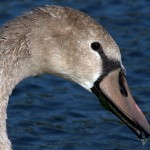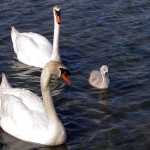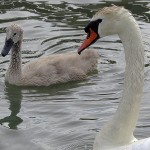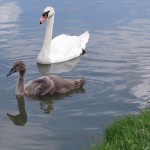Dateline – May 30, 2014
NOTE: This post is part of a continuing series of observations: [ First | << Prev | Next >> ]
I’ve got several things to update you on in this post, but like always, I will start with the Mute Swans. It’s an easy update this week, as everything is going just fine for the swan family.

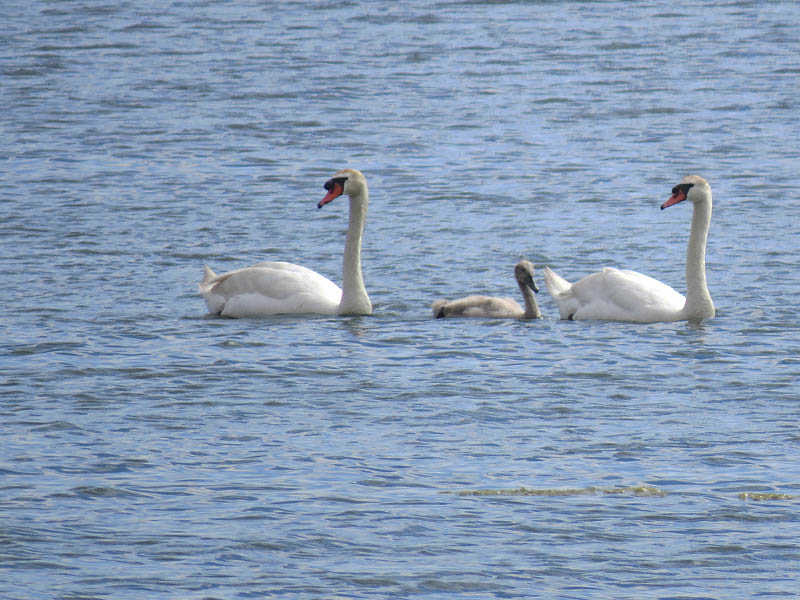
I have been using adult Mallards as a size reference to give people some idea of how large the baby swan has grown. On this visit I found that the cygnet is now significantly larger than a typical Mallard. In fact, the young swan is rapidly gaining on the resident Pekin Duck in the size department.
Despite the cygnets continued rapid grow, there is still no sign of feathers on this the sixth week of his life. I suspect we will be seeing some soon, however.
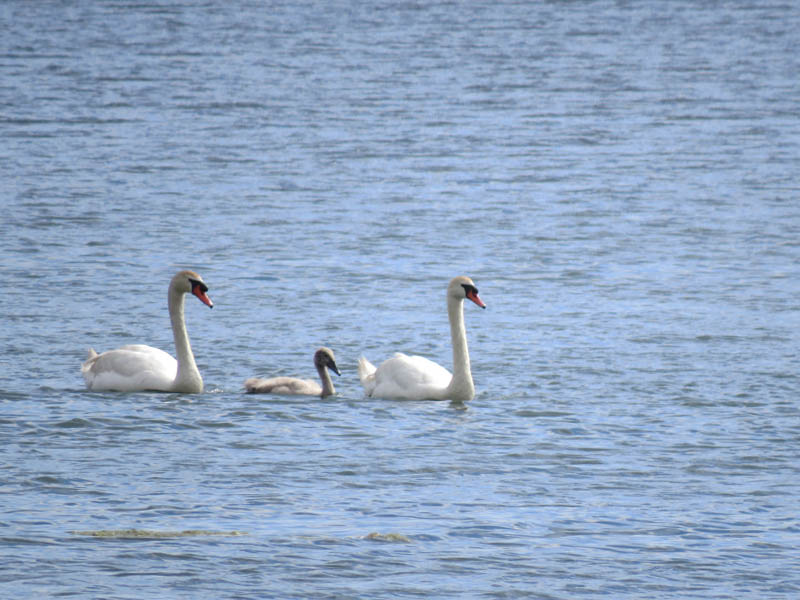
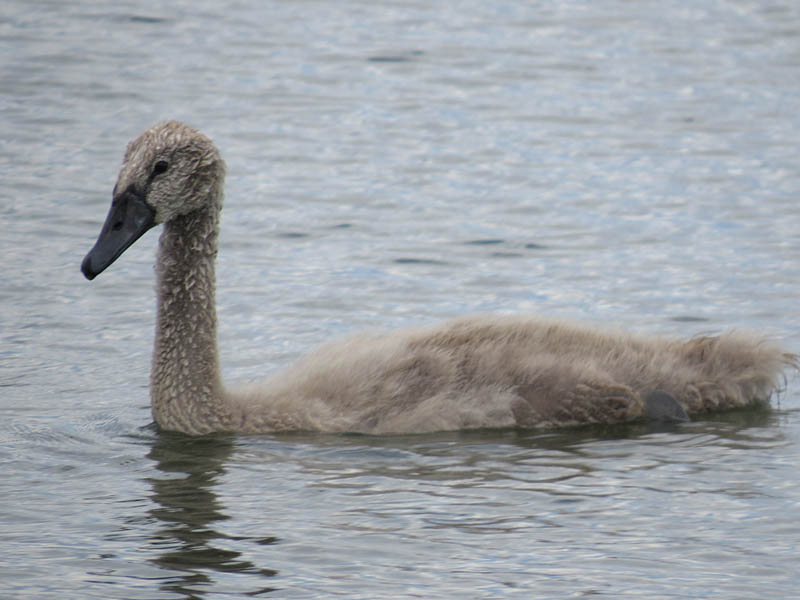
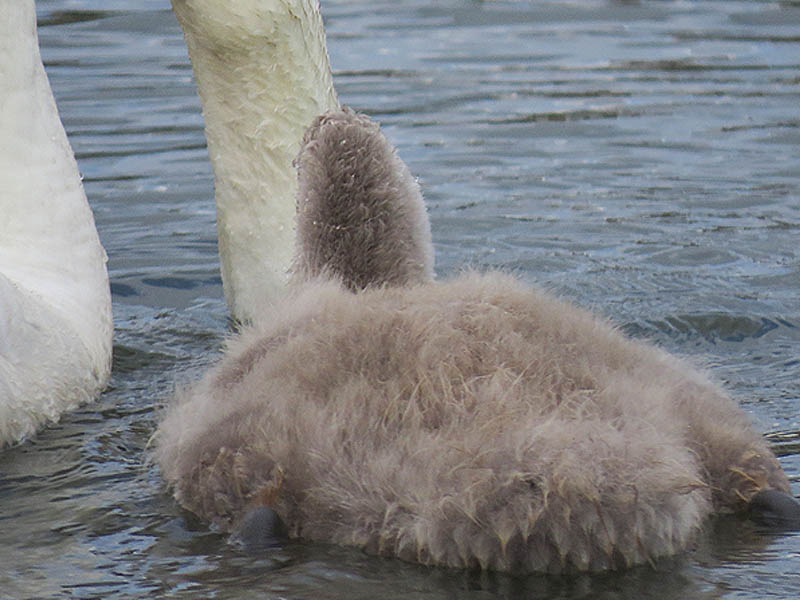
The pond, too, is going through some interesting changes as we move from spring into summer. Recent rains have kept the water level consistent, but continued aquatic vegetation growth is exposing shallow areas out near the center on the small lake.
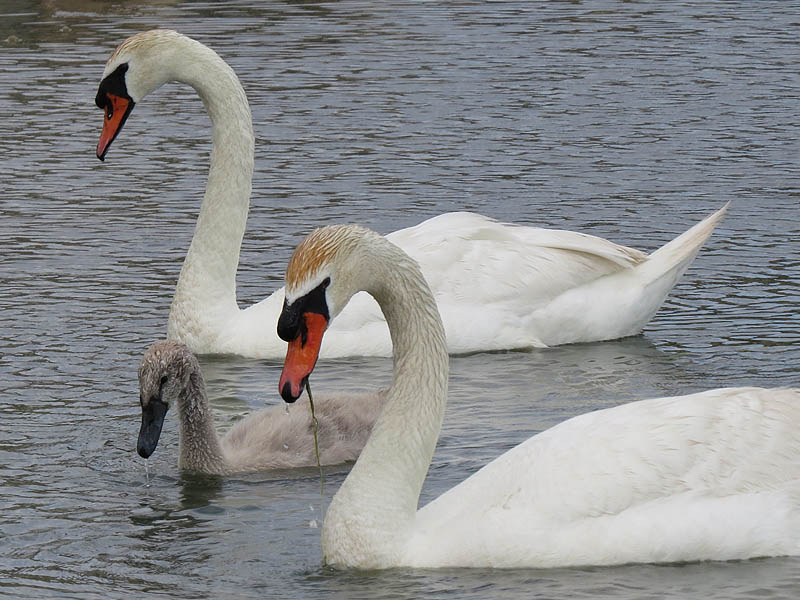
Of particular interest this week was the area just behind the swans in the picture below. On closer inspection this part of the lake was shown to be absolutely full of Red-eared Slider Turtles mixed in with a few River Cooters.
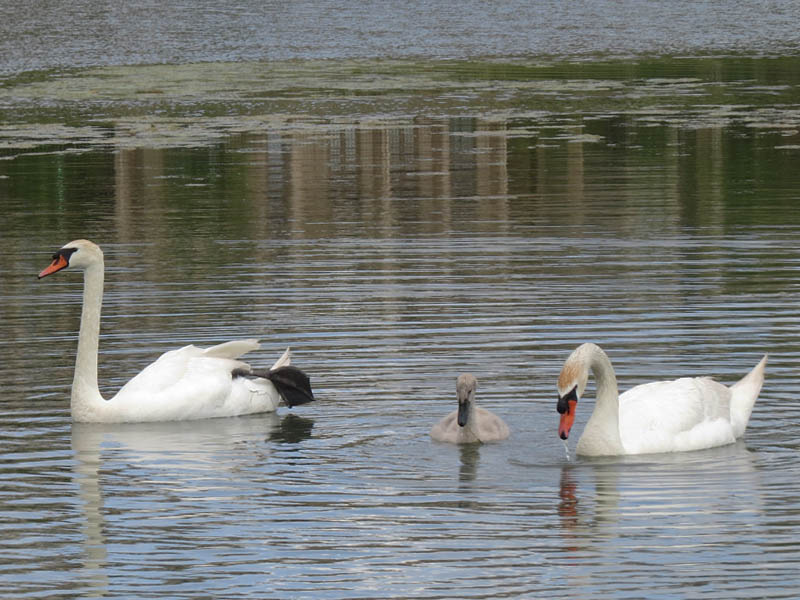

I’m not sure exactly what is going on with this congregation, but I suspect that the water here is sufficiently shallow that the turtles are able to bask while still submerged. This arrangement must give the turtles an added sense of security that I’m sure they appreciate.
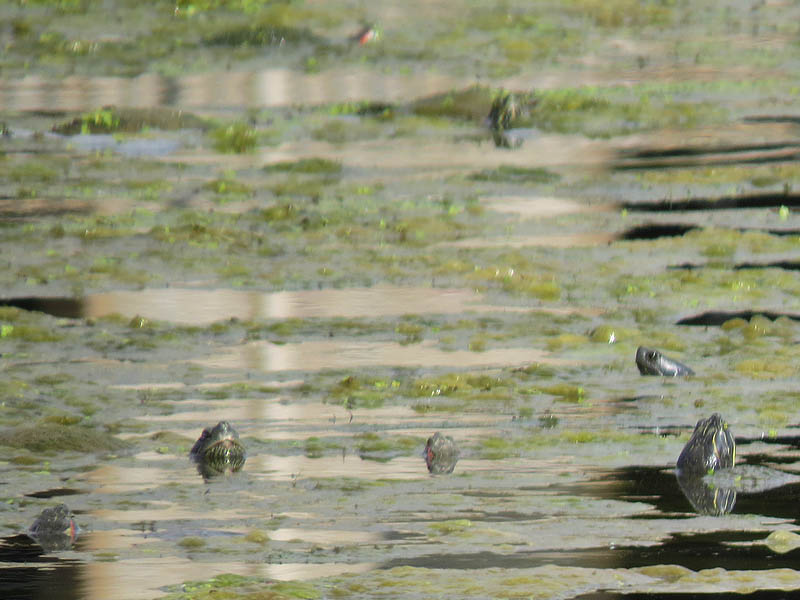

In other parts of the park fledgling Great-tailed Grackles—which for all partical purposes look like adult birds now—are still following their mothers around and demanding to be fed. Teenagers!

Down by the waterside a Snowy Egret fished by a rocky outcropping as a large Nutria swam by behind him.
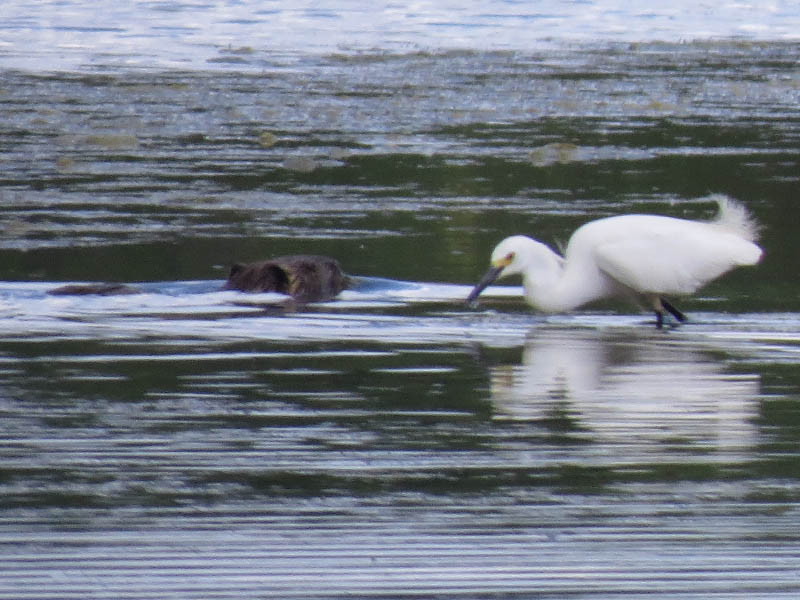
The flightless juvenile Mallards that I mentioned in last week’s post have now banded together with a group of just slightly younger ducklings, and appear to have adopted their mom. See the video below:
This congregation of young Mallards was interesting to me because the young birds could be seen diving for extended periods of time while the group was feeding in deep water. Mallards are not diving ducks and I was unaware that they could engage in this type of behavior. Once back in more shallow water they returned to the more typical “dabbling” feeding technique.
There was also quite a bit of activity at the Northern Rough-winged Swallow’s nest this week. The nest has been constructed inside a plastic pipe embedded in a stone retaining wall. The pipe is just a little over a foot off the ground and is about four inches in diameter. A steady chirping sound can be heard emanating from deep inside—hungry baby swallows no doubt.
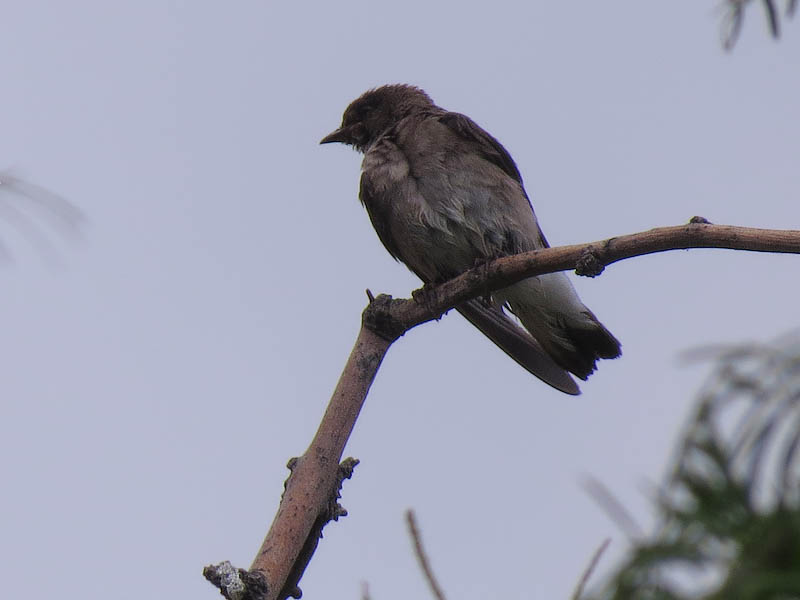
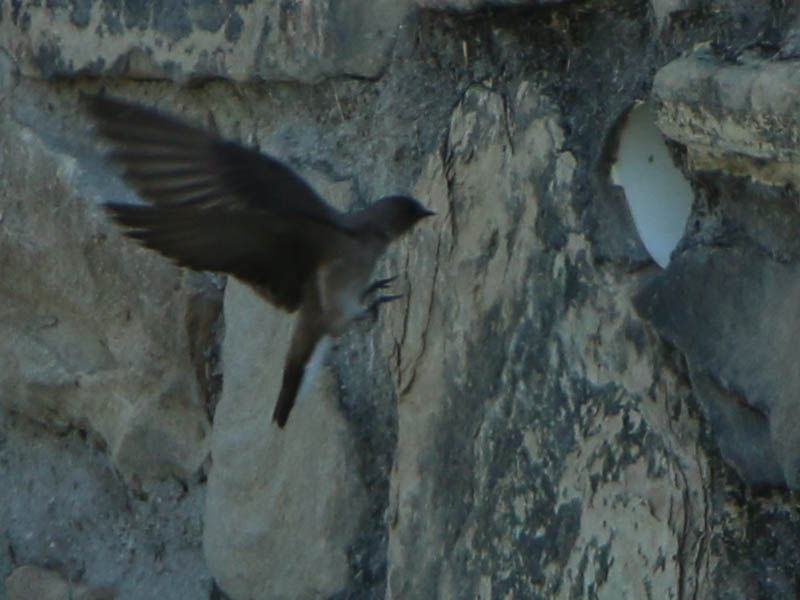
There are several of these pipes located at regular intervals along the length of the retaining wall. I believe these pipes are meant only for seepage, I don’t think they are full fledged drainpipes. So, some water does probably does run through the pipes during a rain shower, but I don’t think it would be a deluge of sufficient force to wash the nest away.
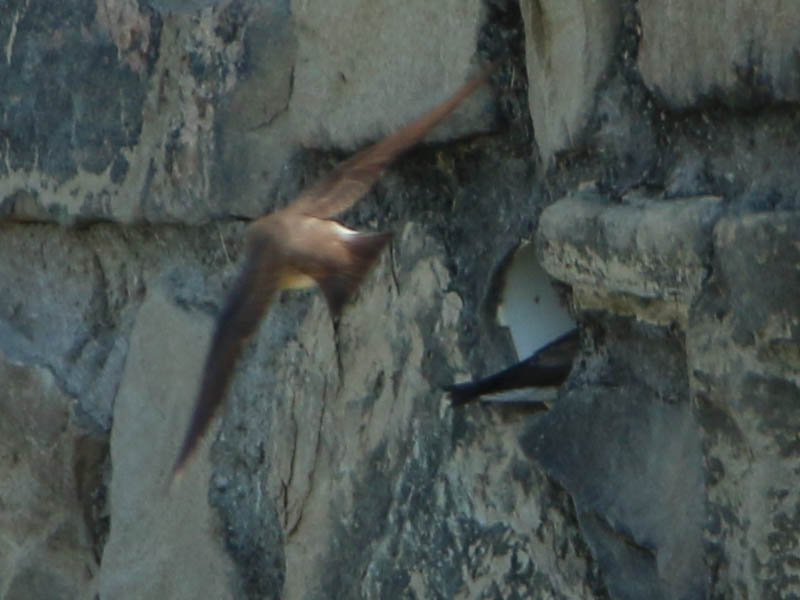
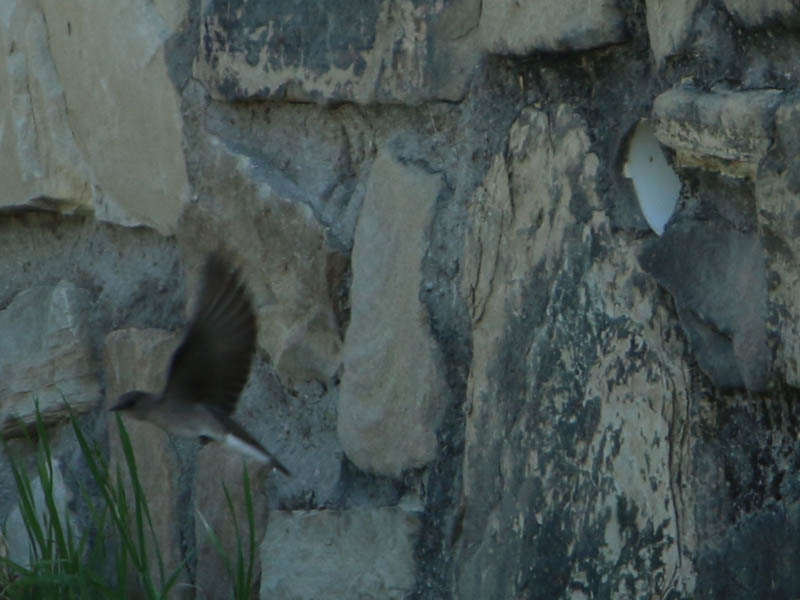
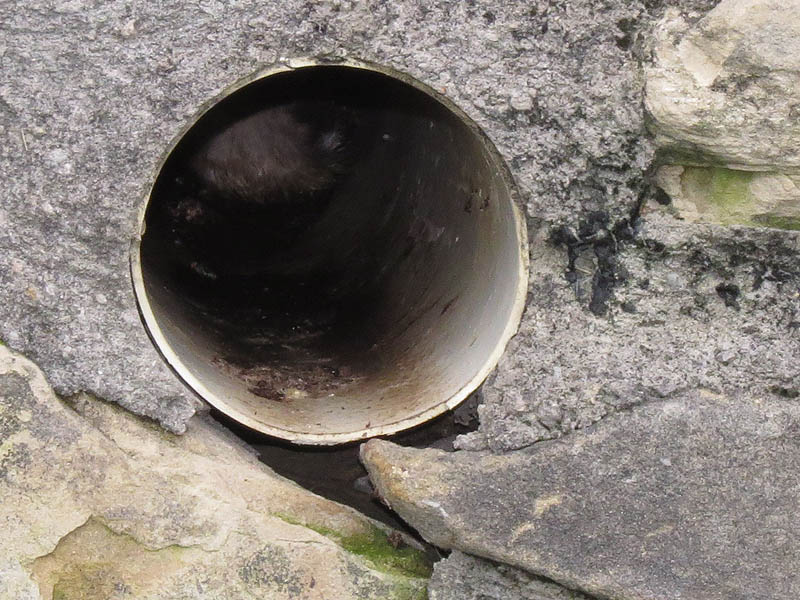
Although I’m not ready to blame rain water flowing through the pipes, something did get to this fledgling swallow I found on the trail just below the retaining wall. I examined the baby briefly but was unable to determine the cause of death for this young bird. Life does becomes exceedingly treacherous for juvenile bird of all kinds in the phase between the nest and free flying. Fledglings are extremely vulnerable at this stage of their development and they face a whole host of dangers.
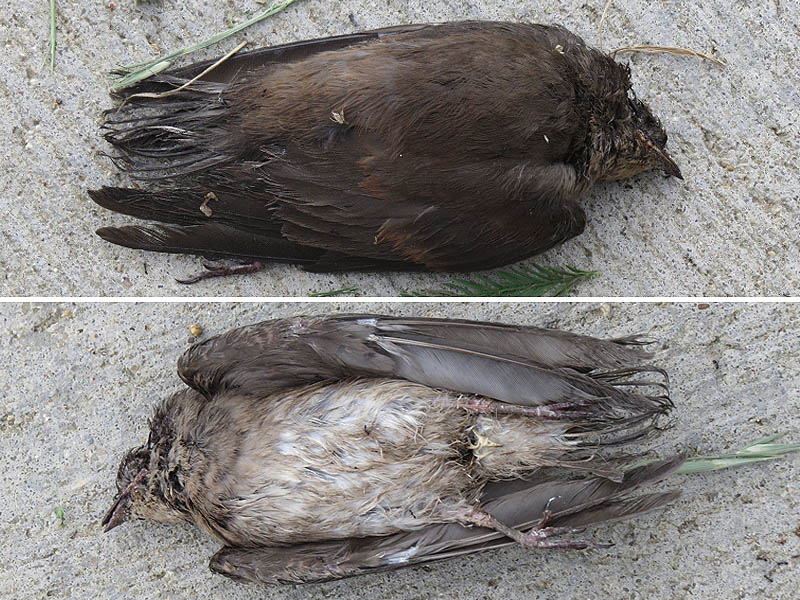
Around the bend along the marshy end of the lake I came across a number of the usual suspects. An young Eastern Cottontail was seen feeding among the reeds, while just above him a male Red-winged Blackbird kept watch over his small portion of the the wetland.
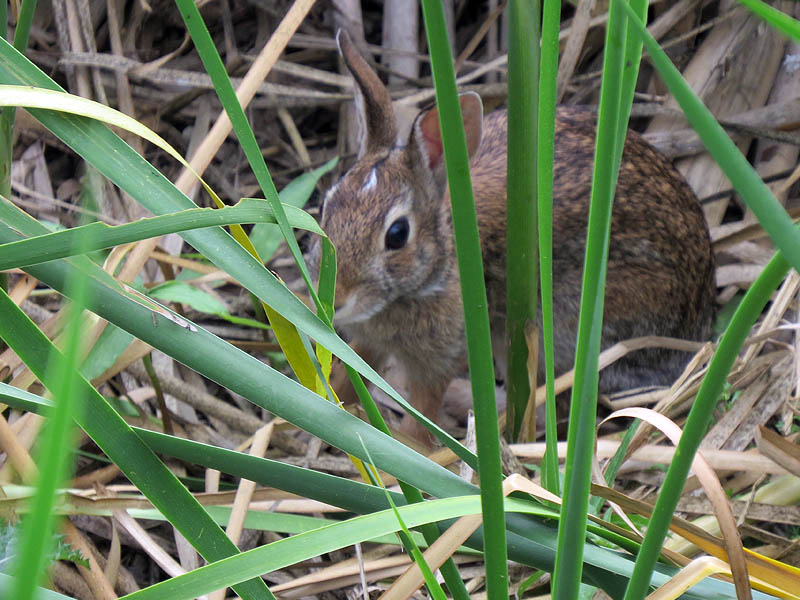
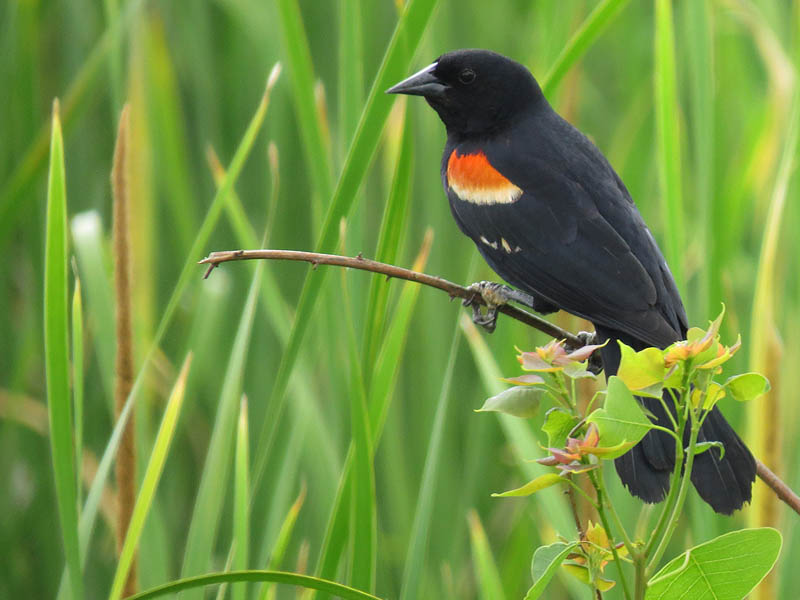
A little further on, and I came across this Great Egret fishing in the shallows. Minnow after minnow fell to this skilled hunter.
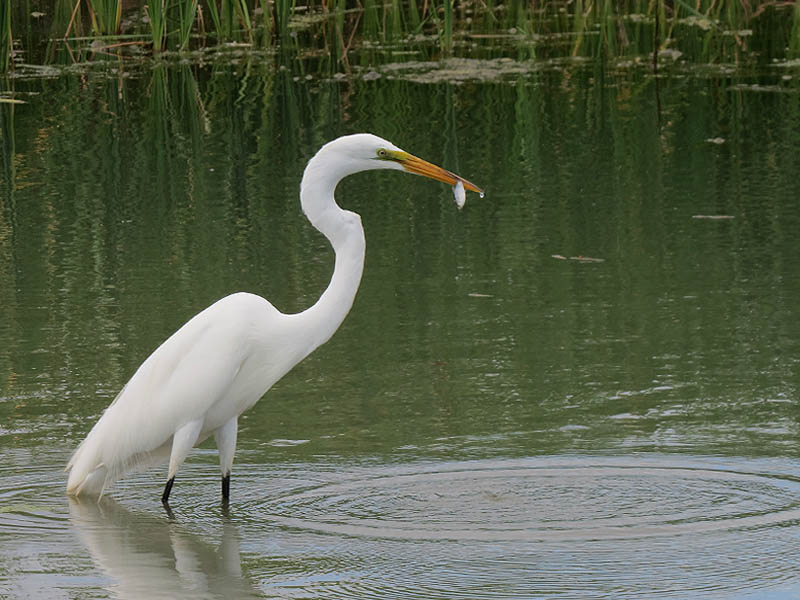
Watching this egret fish reminded me of one of the inspirations for this website. Years ago at City Lake Park in Mesquite, Texas I watched a Great Egret repeatedly approach a pair of men fishing on the far bank. Each time the egret would come near, one of the fishermen would reach into his minnow bucket and offer a small fish to the clever white bird.
I was very impressed by this interaction, and was amazed that the egret had become accustomed enough to people to be able to approach these fishermen without fear. The wonders of urban wildlife!
Finally, I stopped by to quickly check on the nesting Scissor-tailed Flycatcher that I first reported on last week. The adult was off and on the nest frequently this afternoon, but I did not see her actively incubating. We may have a couple a tiny hatchling flycatchers! I will know more after next week’s visit!
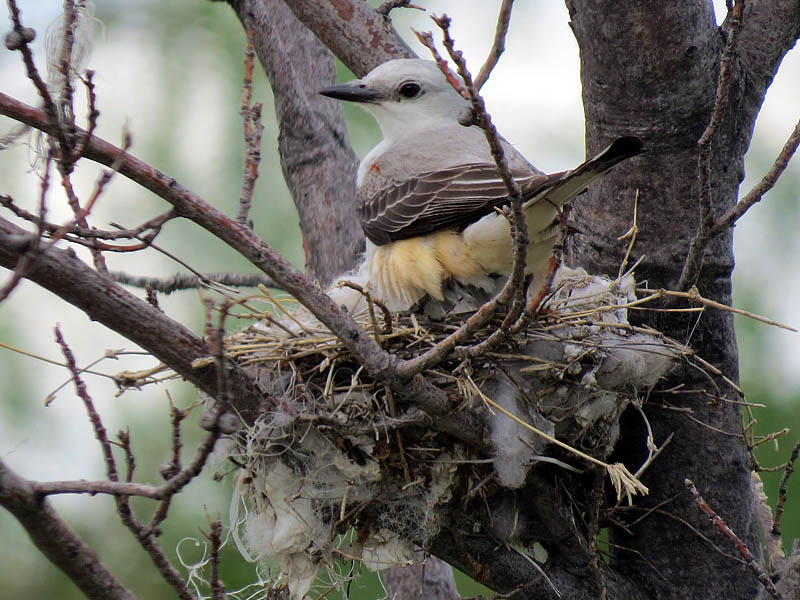
There was also some news this week about the unfortunate situation concerning the Mallards nesting in a busy parking lot. After considering the prospects for these ducks and their offspring for several weeks, it became harder and harder to imagine a positive outcome for this nest.
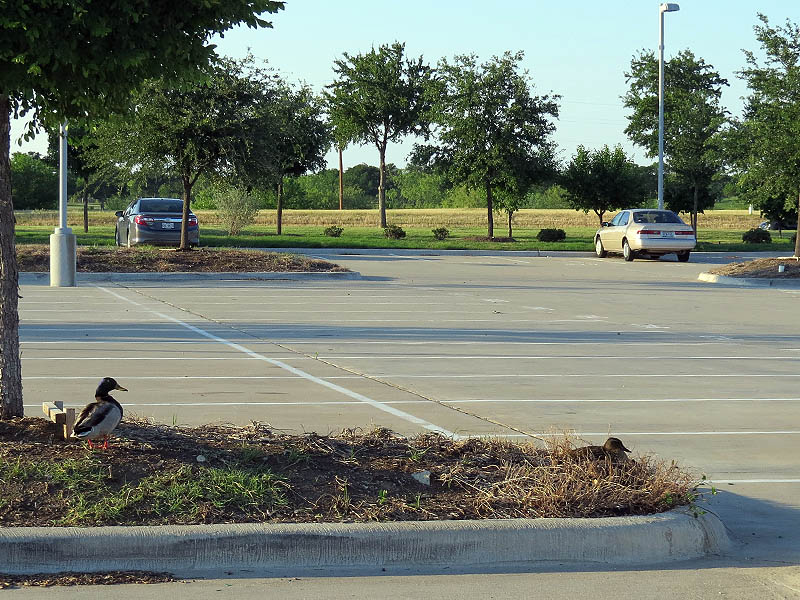

Shortly after hatching the young Mallards would be faced with having to make their way across this busy parking lot. At peak hours, this would be a certain death sentence. If the traffic did not kill the small ducklings, then heat and exhausting surely would.
If the brood somehow made it out of the parking lot they would have a choice to make. They could either head for a small lake, or they could make their way toward a nearby creek.
The route to the lake would require the family group to cross a busy six lane thoroughfare, and then make their way around a chain link construction fence in order to cross the almost two hundred yards of open field that lay between the road and the lake.
The way to the creek is also fraught with dangers. The duck family would first have to cross a four lane street which carries much tractor trailer traffic. After that, another large parking lot would stand between the ducklings and the relative safety of the creek water.
Concerned, I reached out to a few wildlife experts I know for their advice. In the end it was determined that neither of these two scenarios was likely to give the young ducklings much of a chance, and the decision was made to intervene.
A volunteer working for a license wildlife rehabilitator stopped by eight days ago and collected the eggs. The eggs were carefully transported to the wildlife center where they were candled to determine their age and then placed in an incubator where they will stay until they hatch.
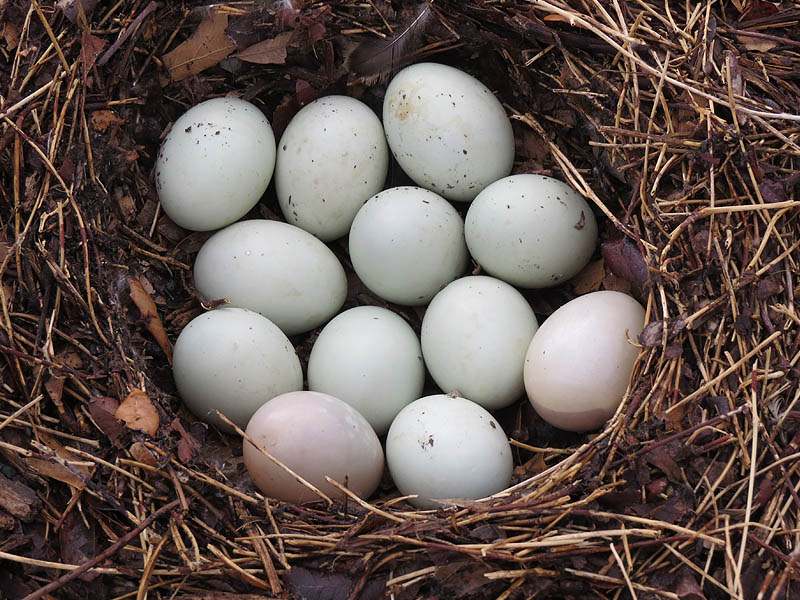
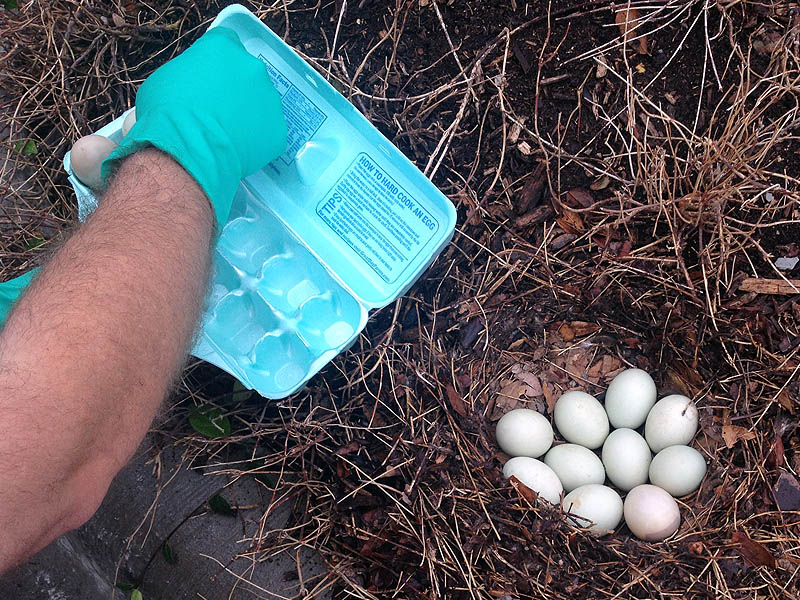
There were twelve eggs altogether, but two had terminated at least a week or more before they were collected. The ten remaining eggs were determined to be very far along in their progress, and would require only a week or so of further incubation.
Sure enough, this past Saturday we received the news that the first of the ten remaining eggs had hatched. As you can see in the picture below, several of the other eggs are beginning to hatch as well. Let’s cross our fingers a hope all ten hatch successfully!
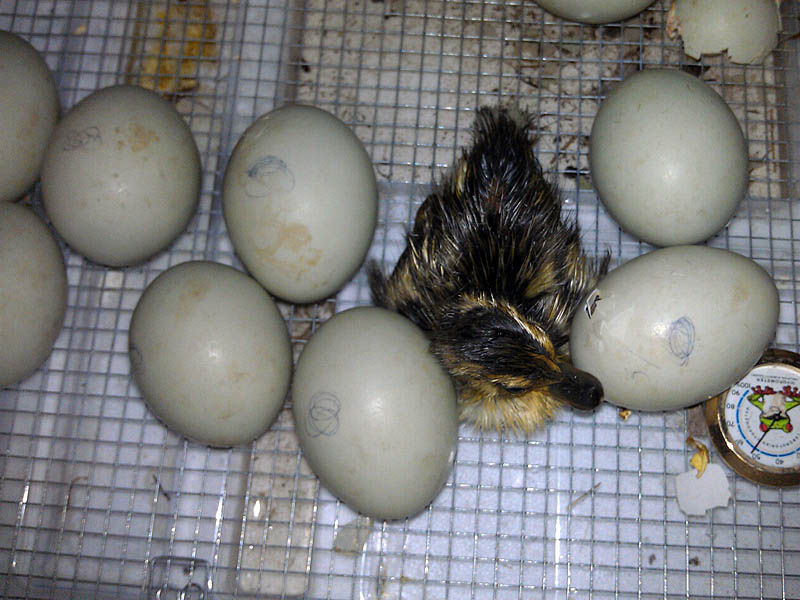
These baby Mallards will be cared for by skilled wildlife rehabilitators for several months. When they are ready, they will be released to live their lives in the wild as they should. I will update you all on their progress again next week!
NOTE: This post is part of a continuing series of observations: [ First | << Prev | Next >> ]



